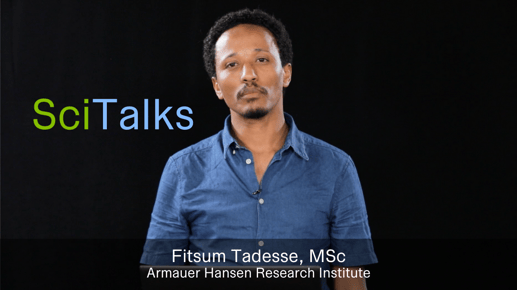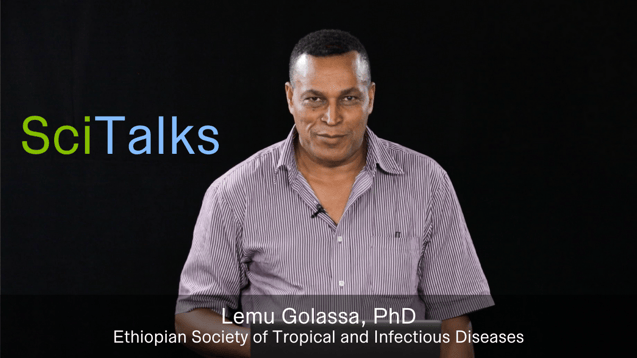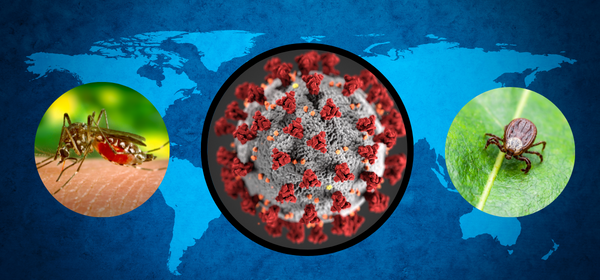The Malaria Endgame ePanel Event: Audience Q/A with Global Leaders
Hundreds of viewers from around the world have tuned in to watch "The Malaria Endgame" ePanel on VKS, featuring global leaders leaders Gordon Awandare, Lilian M. Ang’ang’o, Lemu Golassa and Fitsum G. Tadesse as they discuss the current state of the field, and future directions and challenges in the fight to eliminate malaria from endemic countries. From Ethiopia, to Sri Lanka, to Brazil, and over 70 other countries, audiences engaged and submitted their questions about malaria vaccines, vector control, public health policy and more to our panelists. Here, our experts weigh in with their answers to these critical questions about the path to malaria eradication.
Watch the FREE On-Demand ePanel Now!
Also see our exclusive interview with Dr. Pedro Alonso, WHO Global Malaria Programme Director:
"Malaria Challenges in the COVID-19 Era"
https://virtual.keystonesymposia.org/ks/live/442/page/2497
For more on Malaria & COVID-19, see panelist Dr. Lemu Golassa's Q/A below!
Q/A with The Malaria Endgame ePanelists
Your audience questions answered by global leaders...
Lilian Mbaisi Ang'ang'o
Fitsum Tadesse
Lemu Golassa
Lilian Mbaisi Ang'ang'o
What do you see will be the role of vector control and LLINs in particular in achieving the endgame? Can we achieve malaria elimination without a vector control tool?
No. Prevention is just as important as a cure.
The vector is the only vehicle via which malaria spreads through the population. Malaria elimination will only become a reality if we develop more preventative measures. A big portion of the success in malaria decline over the years has been attributed to vector control tools. Despite the current drawbacks from development of insecticide resistance, the important role vector control plays in malaria eradication should not be ignored but rather enforced.
Which technology or approach do you feel has the greatest potential to make a significant and transformational contribution to the vector control toolbox within the next decade?
Parasite transmission blocking in the vector through the use of naturally-occurrying symbionts within the mosquito has received a lot of interest in malaria research. This has already been shown to work in Dengue control using Wolbachia, and has therefore a huge potential to be a successful malaria control tool. Not only is it sustainable through generations of the mosquito, the symbiont also has no detrimental environmental effects.
An interesting piece of work showing the potential of this control tool is highlighted in this article from nature.
What is the diagnostic gold standard for malaria particularly in low economic countries and what are the limitations of the testing?
Rapid Diagnostic Test kits are broadly used and have been shown to be the fastest way of diagnosing malaria. They are readily available and quite cheap immunochromatographic tests. Its main limitation, like many other tests, might be the occurrence of false negatives, as this is mainly an antigen test and might not be able to detect some variants of Plasmodium species.
What is the biggest challenge to malaria elimination your country and Africa? What is the most important impediment to elimination in your country?
Poverty and ignorance.
The government and NGOs have put in place several malaria elimination and outreach programs throughout the country. Availability of LLINs, IRS projects and the subsidized diagnostic and treatment costs have been quite advantageous over the years. However, the immense poverty crippling people especially in the rural areas has been a major drawback in these control strategies.
For example, a patient sick with malaria, once healed, will stop taking the full dose of antimalarials and save it for future use by a family member. This has regrettably been the biggest cause of development of drug resistance in Plasmodium parasite. Self-diagnosis also plays a key role.
Fitsum Tadesse
What is the view of the panel on the progress of implementing evidence-based targeted interventions at the community level and their challenges in African context? Who should take the lead for effective programs and researchers collaboration... researchers or program managers?
I see the challenges in the fight against malaria elimination can better be tackled in multisectoral manner that involves bridging the gap between science and implementation. The responsibilities lie on the shoulders of program managers, researchers, and the targeted community at large. One of the key strategies that I believe will bring change is to invest more in building scientific capacity among the program people and managerial skills for researchers, enhancing awareness and creating ownership of the targeted community.
Creating ownership at the program and community level is one of the key areas in implementing evidence-based interventions. Allowing for an input from the community, rather than making it unidirectional, plays paramount importance. Research questions are generally formulated by academics or scientists who design the protocols and approach volunteers to participate in the studies. Researchers drive the agenda of what is investigated. The participation of communities in research is critical not only to generate knowledge but to also implement lessons learned and to guide the practicalities of the study.
Scientific knowledge takes years to comprehend, at the same time research is forced to apply precise scientific terms to maintain comparability with parallel studies while this exposes it to lose the chance to engage with the study participants and community members at large. This becomes a daunting task when we consider the lower than average literacy rate in the most affected population. A two-way conduit where practice leads to further research would shorten the path to impact. If communities get engaged in exploring ways of improving their own health, “research can serve as a compass to guide innovators” and solutions would likely be implemented faster (Aseffa 2018).
Creating platforms for exchange of ideas and shaping priorities of the program to guide evidence generation will play paramount importance. If the research is guided by priorities of the country (program), the gaps can easily be narrowed. Most solutions on the path towards malaria control/elimination are mainly driven by priorities of funders and donors, which in some cases can be one-size-fits-all approach. Endemic countries may need to take the lead in this regard and invest in generating locally tailored evidence to guide interventions. As malaria transmission declines, we anticipate heterogeneity in disease risk factors which eventually require locally tailored approaches. The effort of the endemic countries in bridging the gap between internationally driven and locally tailored approaches comes into play in here.
What challenges are posed to malaria control and elimination by the increased circulation of Plasmodium vivax in Subsaharan Africa ? What could be the explanation of this recent appearance of P. vivax?
If we are talking about the entire continent, P. vivax is not unique. It was there long ago and affects the lives of many. Malaria in Africa has historically been attributed to P. falciparum while recently moderate to conclusive evidence of P. vivax transmission is being reported in different countries across the continent (Rosenberg 2007, Howes, Reiner et al. 2015). There is this common misunderstanding that all infections that exist in Africa are solely of P. falciparum, justified by the higher burden it poses. If you start looking carefully into existing data, you will find evidence that P. vivax contributes to a non-negligible level in the continent. Countries in the horn of Africa such as Eritrea (Sintasath DM, et al., AJTMH 2005), Djibouti (Seyfarth M, et al., Parasitol Res. 2019), Somalia and Sudan (Elgoraish AG et al., TRSTMH 2019), Madagascar (Nepomichene TN, et al., Malar J. 2015) and Mauritania (Ba H, et al., Malar J. 2016) are the most affected. P. vivax is highly endemic in Ethiopia. Ethiopia alone contributed towards 9% of the global P. vivax cases in 2017 (World Health Organization 2018). Across Ethiopia P. vivax malaria accounts for 40% of infections with an increasing trend as you go high in the altitude (Yeshiwondim, Gopal et al. 2009, Taffese, Hemming-Schroeder et al. 2018).
It can be argued that, during periods of intensive malaria control, intervention strategies were tailored against P. falciparum. Although not conclusive enough, there were concerns that whilst intervention methods succeed in reducing the burden from P. falciparum, P. vivax remains relatively stable in co-endemic settings (Cohen, et al., 1973, Prosper and Martcheva, 2013, Anvikar et al. 2016). The biology of P. vivax; existence of hypnozoite stage, earlier gametocyte generation, lower parasite densities related with its strict preference for reticulocytes, and shorter cycle and low-temperature requirement for sporogony, makes it a harder species to control and one that will require a different strategy to that of P. falciparum (Sattabongkot, et al., 2004). This might explain the change in proportion of species composition in co-endemic settings.
In Africa, on the other hand, evidence on P. vivax burden is influenced by the early existing assumption that the parasite does not infect Africans as it strictly requires the Duffy antigens for invasion. The Duffy antigen receptor that functions as a promiscuous chemokine receptor (Wurtz, Mint Lekweiry et al. 2011) was regarded until recently as an obligate trans-membrane receptor for the invasion of the reticulocytes by the P. vivax parasites because individuals from western and central Africa who lack the receptor are resistant to P. vivax invasion (Miller, Mason et al. 1976). The presence of P. vivax in apparently Duffy negative individuals (Rowe, Opi et al. 2009, Menard, Barnadas et al. 2010, Wurtz, Mint Lekweiry et al. 2011) suggested that P. vivax may invade reticulocytes using alternative receptors. A recent study found the transferrin receptor 1, which is preferentially expressed by reticulocytes, as a critical receptor for P. vivax reticulocyte-binding protein 2b (PvRBP2b) to invade erythrocytes (Gruszczyk, Kanjee et al. 2018). Evidence in P. vivax lags behind mainly related with the inability to culture the parasites in vitro. Further investigation is required on the distribution of the disease and its alternative invasion mechanisms and more investment is required for the development of safe and easy to use radical cure.
What would be the most effective way to combat P. vivax and its hypnozoites (dormant forms in the human liver that are difficult to eradicate and contribute to disease latency and relapse)?
The main hope lies currently on primaquine (PQ), an 8-aminoquinoline. Two challenges surround PQ usage as a radical cure; safety in G6PD deficient individuals and adherence for 14 days after pain and fever related to the disease subsides within 2-3 days. Drugs such as Tafenoquine (TQ), a single dose regimen, are the hope but safety issue still surrounds TQ. Whilst we acknowledge that innovation is required in every field, especially for this deadly disease, building on or strengthening the already existing approaches such as vector control and universal coverage of diagnosis and treatment needs also be given emphasis.
See his SciTalk
Lemu Golassa
How close are we especially in sub-Saharan Africa to ending malaria, with the environment still being a major factor contributing to this? What are your projections as to the ambition of malaria elimination by the year 2030 with respect to sub-Saharan Africa?
Elimination of malaria may take longer than expected. Countries are at different levels of endemicity and commitment. Some doing well, others not. The problem may not be the environment. Holistic approaches are needed to curb malaria.
Malaria elimination seems unrealistic in Africa as projected by 2030. Maintaining the sustainable intervention strategies on board will be a big challenge. Resources to fight malaria comes from non-endemic countries. Thus, the sustainability of the funding issue comes in here as far as the fight against malaria and sustainability of funding are concerned.
Can we achieve malaria elimination without a vector control tool?
The answer is no.
Elimination of malaria won’t be successful with a single intervention strategy. Instead, malaria elimination would be feasible with synergy of intervention strategies targeting the vector, the parasite and the environment.
What do you believe is the single most important barrier that needs to be overcome for malaria eradication to be a possibility?
The inability to produce an effective malaria vaccine is the single most important barrier to date.
Asymptomatic malaria is a very commonly observed phenomenon in malaria endemic regions. What measures should be taken to overcome this variable towards transmission control in such malaria-endemic regions?
There exists controversy regarding how to deal with asymptomatic infections in the community. A subset of inhabitants from endemic regions tend to be asymptomatic following repeated bite of infectious mosquitoes. Identification of those individuals is challenging as parasitaemias are below the level of detection threshold of the commonly used diagnostic tools (microscopy and RDTs). A more sensitive tool, PCR, can pick up such a reservoir of infections. However, the use of PCR would be challenging as it requires sophisticated equipment. Attempts to go for mass drug administration to eliminate the reservoir pool of infections has been challenged from economic points of view. Reactive case detection has its own limitations as well.
What is the biggest challenge to malaria elimination in your country and Africa?
The lack of commitment.
Certain governments are obsessed with other less important issues rather than focusing on malaria. Indeed, there are other equally important diseases (TB, HIV, etc.) that attract government attention. The biggest challenge to malaria elimination is, therefore, poverty. In the absence of economic development in the continent, that takes a longer time, attempts to eliminate malaria would be very much challenging.
Epidemiologically, has there been any change over time in malaria rates or prevalence?
Yes, there have been substantial changes in malaria incidence/prevalence over temporal scales following the deployment of massive intervention strategies across endemic regions, although these changes are inconsistent. But, overall a decline of cases has been observed.
Vaccines, Drug Treatments & Rapid Diagnostics Questions:
Is it possible to see the end of malaria without a vaccine?
No single strategy is sufficient to end malaria. Concerted efforts are required. The role of the vaccine is manifold. It is hoped that the vaccine could join those strategies on board to fight malaria soon to make the momentum speedy.
Where does the funding for a malaria vaccine come from?
Mostly the funds for malaria vaccine come from non-malaria endemic countries. I hope that Africa will wake up and start contributing to malaria research very soon. Africa should not expect to keep receiving funds for its own problem.
In light of anti-malaria resistance to known and potent drugs, how can we effectively fight malaria if we are not already losing the fight?
Indeed, ACT is still effective in Africa although de novo mutations (synonymous and non-synonymous) in the Kelch 13 genes have already been identified in the region. Indeed, a mutation that has shown to contribute to ACT resistance C580Y in SEA isn’t identified in Africa.
Do you have laboratory set up here in Ethiopia to test antimalarial plants so as to assist in the eradication of the disease?
Yes, we do. You may visit Aklilu Lemma Institute of Pathobiology, Addis Ababa University, Ethnobotanical Research Unit. This Unit has been extensively researching traditional herbs, shrubs, etc. known to have medicinal value.
It is a well-established fact that nowadays rapid diagnostic tests (RDTs) are one of the cornerstones of malaria control and eradication. Nevertheless, those RDTS are challenged by the deletion of the histidine-rich protein 2 and/or 3 (hrp2/3) genes leading to false-negative test results. I would like to know whether there is evidence of selection for the spread of the hrp2/3 deletions?
The hrp2/3 gene deletion is another emerging challenge in malaria diagnosis in recent years. However, there is no evidence to date about what is driving the hrp2/3 gene deletion in the parasite. Obviously, when those parasites carrying the wild-type hrp2/3 gene sequences are diagnosed by RDTs and treated, those with mutant types will remain undetected and untreated and become predominant circulating strains in a population leading to selection.
Policy Questions:
How do we effectively translate our malaria research into policies for governments especially in Africa?
This is a very important question. Research shouldn’t be for fun. It should be able to solve societal problems. Decisions made at any level should be guided by scientific research findings. Here in Africa, the biggest challenge is the lack of synchronization of science and policies.
To what extent are the issues raised during research and policy talks implemented on the ground or in society?
In Africa, countries are at different levels of health infrastructures and commitment. What is well done in one country, for instance, may not be equally applicable in another country. Determination varies across grass root levels and community participation. In some countries, researchers and policy makers closely work together, though not at the level needed.
How can we keep stakeholders, especially within the community, interested in malaria research (regarding the issue of fatigue in engagement) if the proposed tools for malaria reduction/elimination seem years away from deployment?
Community engagement is very essential to the success of any project. An important question is, why is there community fatigue? Something must be there to induce fatigue. We need to check the way we deal with and engage the local community. Given that malaria is a foe, not a friend, there is no reason for the community to accept living with it. Mobilization of the community would make the fight against malaria feasible and more effective.
COVID-19 Questions:
What are the opportunities and challenges for endemic country commitment to malaria eradication during the COVID-19 crisis?
The opportunities may be utilizing the malaria control and prevention strategy platforms to curb the spread of COVID-19. However, the challenges are multiple: funds go to COVID-19, government and stakeholder attention have gone to COVID-19, vector control and other activities against malaria have paused, and health professionals are obsessed with the COVID-19 crisis. Thus, malaria seems to take advantage of this crisis and could resurge.
How do we measure the impact of COVID-19 on ongoing malaria control projects and what systems can be put in place to ensure that these programs do not fall behind and reverse the gains by these programs?
COVID-19 has affected a number of other diseases including malaria. In many countries, programs have been lockdown and activities are paused. During this pandemic, people's movements have been restricted, but malaria keeps doing the usual business. Unless things resume to normal, efforts made so far to control malaria would undoubtedly be reversed. Malaria seems to take advantage of COVID-19 to compensate people’s gain against it.
During the COVID-19 pandemic where chloroquine is given for some patients, how will be the safety of it when combined with DHP or primaquine for someone with malaria as well?
Though their efficacy in treating COVID-19 is yet to be determined, chloroquine and hydroxychloroquine are being investigated worldwide for their potential to treat COVID-19. Indeed, both chloroquine and hydroxychloroquine can have serious side effects when combined with other drugs and studies are underway to investigate their efficacy and safety issues in the treatment of COVID-19.
See More on Vector-Borne Disease & Global Health on the Keypoint Blog:
https://keypoint.keystonesymposia.org/features/continuing-the-conversation-q-a-from-our-epanel-event-on-vector-borne-disease/
Related news
Breaking Research | Daniel Neafsey at "The Malaria Endgame" Meeting
Today, October 30th 2019, world leaders are convening in Addis Ababa, Ethiopia, to discuss our best...
Climate Change & Infectious Disease Threats ePanel ON DEMAND
As climate change alters temperatures, precipitation patterns and other habitat features around the...












